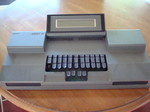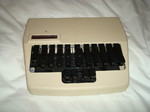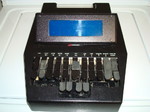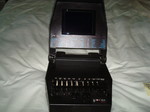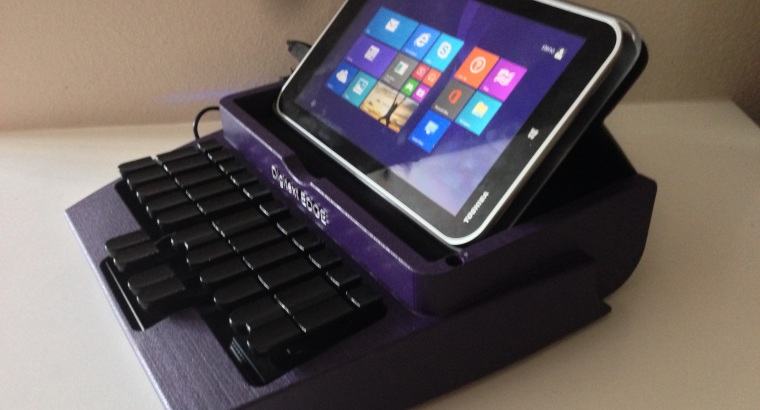
DIGITEXT HISTORY
Digitext was originally formed in 1983 to bring to market the first one-piece translation system, combined with the most computer-compatible theory of writing ever created. The unit
incorporated the patented hall-effect shorthand keyboard and a solid-state "mother" board that was ready to use as soon as you flipped the on/off switch, with two solid-state removable memory
cartridges for storing text and the user's personal and/or job dictionaries. The ST could also emulate the output of the traditional computer keyboards and plug into any computer and run any software, including
Microsoft Word
dictionaries. The ST could also emulate the output of the traditional computer keyboards and plug into any computer and run any software, including
Microsoft Word ,
WordPerfect, and Wang's proprietary word processing software. Truly way ahead of its time, the Digtext ST unit was marketed by Wang Laboratories, and is prominantly displayed in the
Shorthand Museum in New York (Picture #1). Digitext also introduced the first fully electronic compact Steno keyboard (Picture #2) used mainly by students in schools licensed to
teach the Digitext Theory.
,
WordPerfect, and Wang's proprietary word processing software. Truly way ahead of its time, the Digtext ST unit was marketed by Wang Laboratories, and is prominantly displayed in the
Shorthand Museum in New York (Picture #1). Digitext also introduced the first fully electronic compact Steno keyboard (Picture #2) used mainly by students in schools licensed to
teach the Digitext Theory.
Unfortunately, the industry wasn't ready for the concept of realtime writing in 1985, and Digitext didn't survive; although many schools continued teaching the Digitext theory principles.
Jerry Lefler, the founder of Digitext, continued to push foward, founding Realtime Captioning, Inc., in 1989, captioning everything from the local news in Los
Angeles, CBS sports programming, and even the Olympics. Jerry then designed the unit you see in Picture #3(Impact Writer) a compact one-piece translation unit incorporating the same
hall-effect keyboard, along with an onboard thermal printer that could print traditional steno strip, English or English and Steno for easy readback and storage. The unit also contained the first computerized training software that allowed a beginning
student to practically teach themselves, with hundreds of practice drills that corresponded with the Digitext theory manuals.
that could print traditional steno strip, English or English and Steno for easy readback and storage. The unit also contained the first computerized training software that allowed a beginning
student to practically teach themselves, with hundreds of practice drills that corresponded with the Digitext theory manuals.
Jerry also continued to report in Los Angeles for Barkley Reporting, and in 1990 pioneered "realtime" transcripts in the Los Angeles area, providing attorneys with instant "mini transcripts" that could be printed immediately at the job and given to the attorneys before they left the deposition. Jerry is also recognized as the first person to ever
interface with and write to the worldwide web using a shorthand translation device.
instant "mini transcripts" that could be printed immediately at the job and given to the attorneys before they left the deposition. Jerry is also recognized as the first person to ever
interface with and write to the worldwide web using a shorthand translation device.
That system then evolved into the Fonikswriter (Picture #4) which performed similarly to the Impact Writer but had a larger screen, a hard drive, and could be loaded with Windows for added functionality.
for added functionality.
Now, with the amazing progression of technology, the EDGE is born, combining the functionality of the incredibly reliable and silent hall-effect keyboard with today's touch tablet technology, once again setting the bar when it comes to realtime translation systems.
Give yourself the Edge for just $3,995!
Try the incredible EDGE Tablet for 30 days and experience its power and versatility for yourself. If you're not completely satisfied with this amazing Writer, simply ship it back within 30 days and you get a full refund, no questions asked.
SPECIAL PRICING
The price for your own custom-made EDGE Tablet is just $3.995. Now you can have twice the machine for thousands less than the competition!
Don't wait. This offer won't last long.
